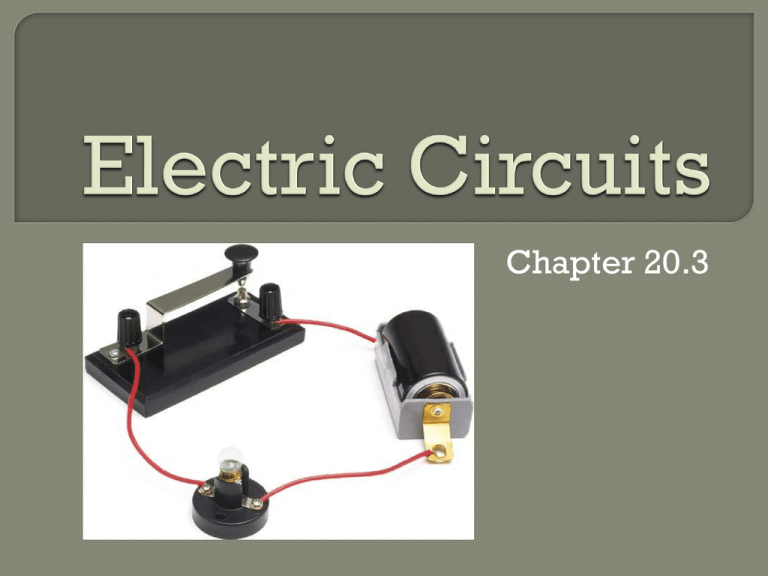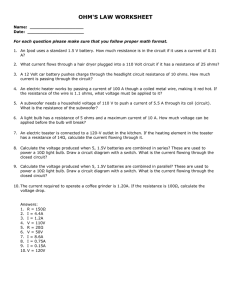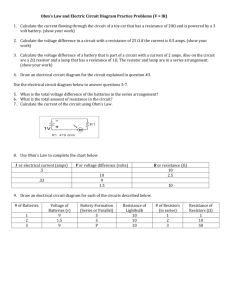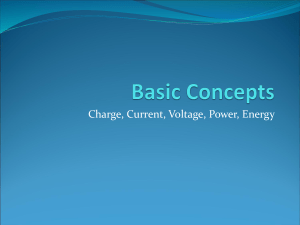Electric Circuits
advertisement

Chapter 20.3 Key Concepts: • What is included in a circuit diagram? • How do series and parallel circuits differ? • How do you calculate electric power and electrical energy used? Vocabulary: • Electric circuit • Series circuit • Parallel circuit • Electric power Use symbols to represent parts of a circuit. Include: • Sources of electrical energy • Devices that are run by electrical energy Each battery = 1.5V Charge has only ONE path through which it can flow. If one element stops functioning in a series circuit, NONE of the elements can operate. • The bulbs in a circuit are a source of resistance. The more bulbs, the more resistance. Voltage is split equally among the resistors in the circuit. + 6V 3V - Current is the same throughout the circuit. 0V What would the voltage be at each bulb if the total voltage is 9 V. How could you make each bulb brighter Charge has TWO OR MORE paths through which the charge can flow. If one element stops functioning, the rest of the elements can still operate. Parallel Series Power is the rate of doing work. • Power is measured in WATTS (W). Electrical power is the rate at which electrical energy is converted to another form of energy. Electrical power is calculated by multiplying voltage by current. P (watts) = I (amps) x V (volts) Electrical power is calculated by multiplying voltage by current. Power (P) = Current (I) x Voltage (V) (W)atts (A)mps (V)olts An electrical oven is connected to a 240volt line, and it uses 34 amps of current. What is the power used by the oven? P = I xV P = 34A x 240 V P = 8200 W Math Practice • Page 611 Problems 1 – 3 • Page 613 Problem 7 - 8 How much energy is used by an appliance. • Energy = Power x Time •E=Pxt • Unit = kilowatt-hours











